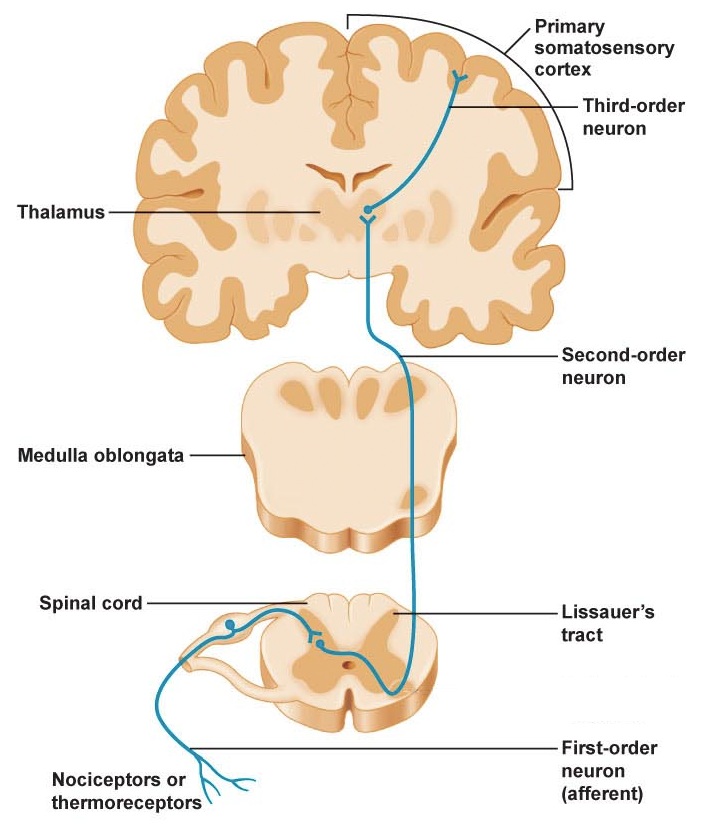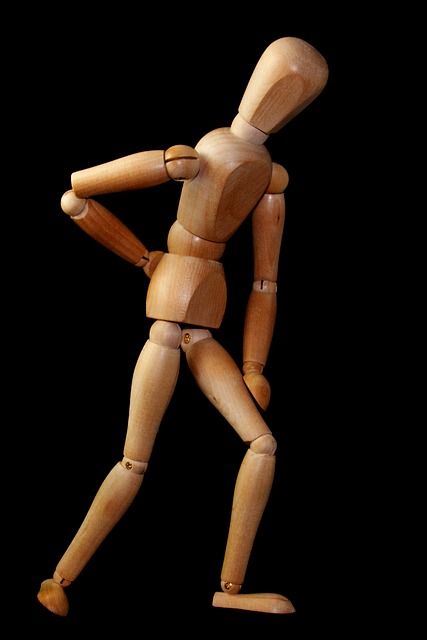Answer: Brown-Sequard syndrome is the neurological condition resulting in loss of motor control and proprioception in one half of the body, with a loss of temperature and pain sensation in the other half.
By Rhcastilhos [CC BY-SA 3.0 (https://creativecommons.org/licenses/by-sa/3.0) or GFDL (http://www.gnu.org/copyleft/fdl.html)], from Wikimedia Commons
Brown-Sequard syndrome is often the result of some injury to one half of the spinal cord, the part of the central nervous system that carries information to and from the brain. It is also called hemiparaplegia or hemiparalysis. This injury may be due to a traumatic incident that punctures the spinal cord, the development of a spinal cord tumor, or some kind of inflammation that causes a decrease in blood flow or an impinging on the nerve bundles. Sometimes, similar but less severe symptoms appear in a person after they have undergone spinal cord surgery.
The spinal cord is made up of several bundles of nerve fibers. The ascending pathways carry information from the skin and muscles towards the brain, while the descending pathways carry information from the brain out to the muscles. The symptoms appearing in Brown-Sequard syndrome occur because the neuronal pathways that these tracts use decussate, or cross the midline, at different places.
First, consider rough somatosensation and proprioception. This information is carried from the skin and muscles towards the brain by means of an axonal tract called the dorsal-column medial-lemniscus pathway. The nerve fibers from the skin and joints send signals via axons towards the spinal column, where they then ascend towards the brain. It is only at the level of the medulla when these sensory fibers decussate. So, if there was an injury to the left half of the spinal cord, rough somatosensation and proprioception information would be lost from the left half of the body below the level of the injury.
On the other hand, consider pain and temperate information. These receptors send axonal projections towards the brain using the anterolateral system of the spinal cord. The axons of this pathway decussate immediately at the level of the spinal cord where the information arises. Therefore, if the left half of the spinal cord was injured, pain and temperature information would be lost from the right half of the body below the level of injury.
The motor nerves that send axons down from the brain are also affected in Brown-Sequard syndrome. There is an ipsilateral loss of motor control since the motor information decussates higher at the level of the brainstem.
Brown-Sequard syndrome can be incomplete and temporary. It is possible for edema, or swelling, to cause stress to the nerves. In these cases, the edema may go away naturally. In other cases, the edema is a symptom of some other underlying neurological condition that may continue to cause injury to the nerves.
![By Rhcastilhos [CC BY-SA 3.0 (https://creativecommons.org/licenses/by-sa/3.0) or GFDL (http://www.gnu.org/copyleft/fdl.html)], from Wikimedia Commons](https://images.squarespace-cdn.com/content/v1/5a96f42d5b409bfd5be103ca/1524360880961-BNEQZK1YMSXSHVMK021E/Brown-Sequard.svg.png)








